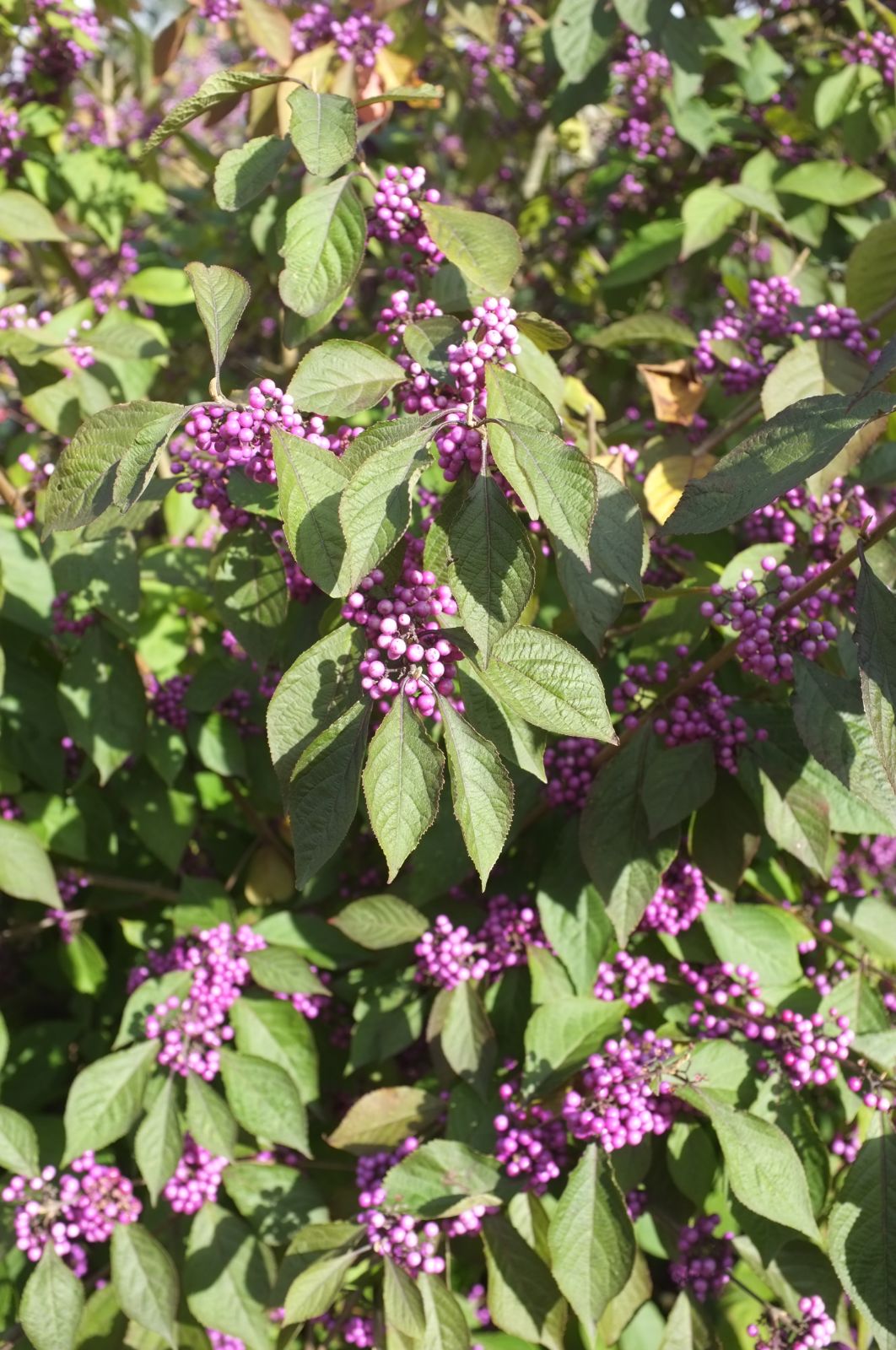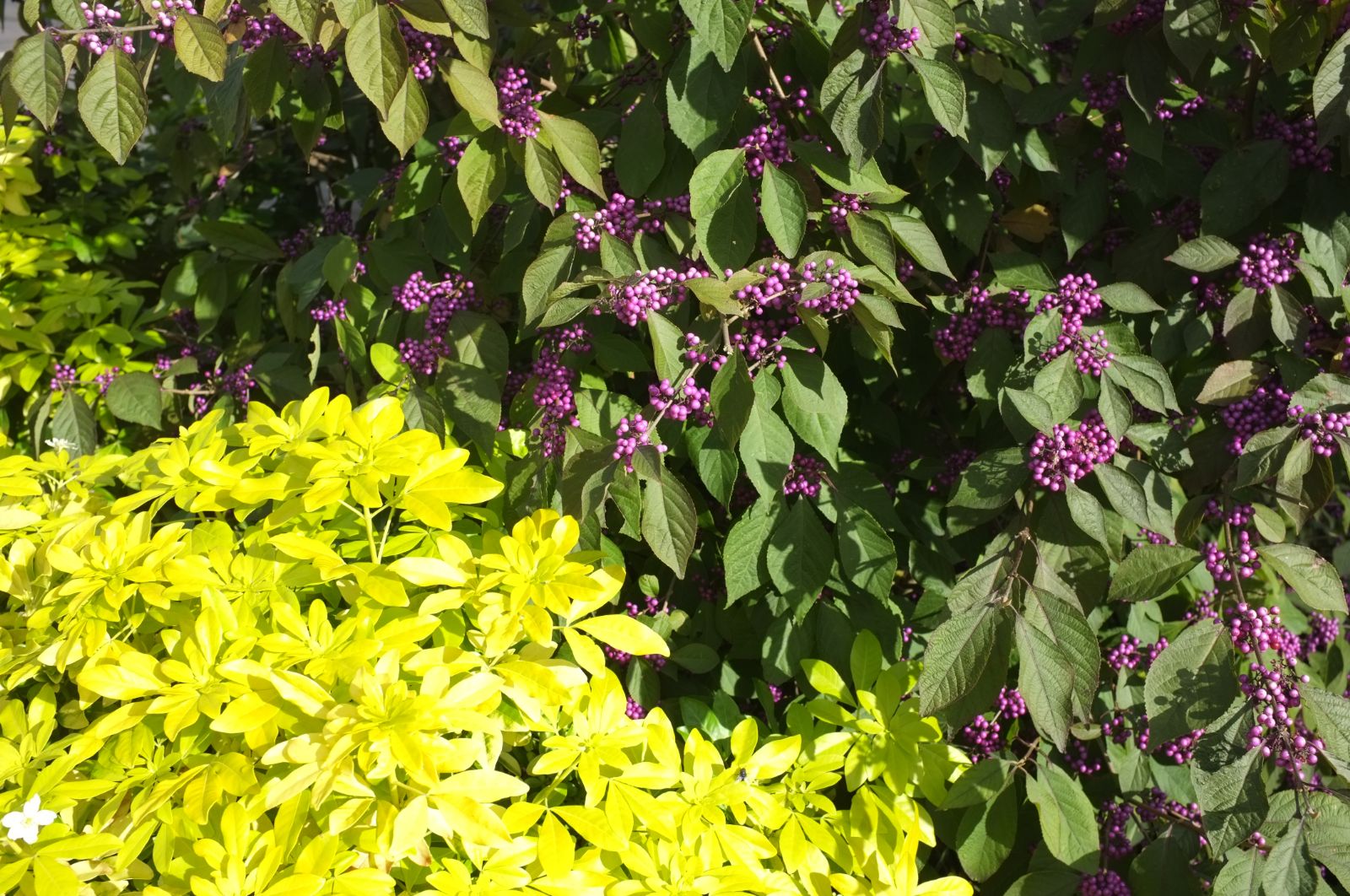Callicarpa bodinieri
Credits
Article from Bean's Trees and Shrubs Hardy in the British Isles
Recommended citation
'Callicarpa bodinieri' from the website Trees and Shrubs Online (treesandshrubsonline.
Genus
Synonyms
- C. giraldiana var. subcanescens Rehd.
An erect deciduous shrub 6 to 9 ft high; young shoots at first downy, soon becoming nearly or quite glabrous. Leaves narrowly oval or lanceolate, with a long slender point and tapered at the base, toothed; 2 to 5 in. long, 1 to 21⁄4 in. wide; dull dark green above, paler beneath, downy on both surfaces; stalk 1⁄3 to 1⁄2 in. long. Flowers numerously produced during July on the leafy shoots in close, rounded, axillary cymes 3⁄4 to 11⁄2 in. wide, the stalks thickly furnished with star-like hairs. Each flower is about 3⁄16 in. wide and 1⁄6 in. long, the corolla lilac-coloured, with four rounded lobes; calyx bell-shaped with four short lobes, sprinkled with star-like hairs; anthers yellow. Fruit globose, 1⁄8 to 1⁄6 in. wide, pale bluish lilac, glossy.
Native of China in the provinces of Szechwan, Hupeh, Shensi; discovered by Henry in 1887. It was introduced to Germany at the end of the nineteenth century by the missionary Giraldi and distributed by Hesse’s nurseries as C. giraldiana. Wilson introduced it to this country in 1907 from Szechwan and plants from his seed were also grown as C. giraldiana. However, some years elapsed before this name was validly published by Schneider, and in the meantime the same species had been described under the name C. bodinieri. It is variable in the degree of hairiness of leaf and inflorescence, and since the type chosen by Schneider differs markedly from that of C. bodinieri in this respect, it becomes:
From the Supplement (Vol. V)
The fine fruiting branches from Windsor Great Park, often exhibited at Vincent Square, are taken from groups of seedling plants. But there is now a clone available – ‘Profusion’ – which sets a full crop of fruits even when grown on its own. Plants with the same character and probably of independent origin have been found in gardens.
var. giraldii (Rehd.) Rehd.
Synonyms
C. giraldiana Schneid.
C. giraldii Rehd


